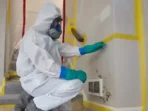Using tempered vacuum glazing can be a very beneficial choice, especially if you are looking to enhance the safety of your building. This is because these types of materials can be very durable and they can even reduce the noise of the outside world. This means that you can enjoy a comfortable and peaceful home environment. You will also find that they can be very energy efficient, which can help you save money.
Energy Efficiency
Whether you are a homeowner or a building professional, understanding the importance of different types of glass and how they can be used to meet your specific requirements can help you select the right type of glazing. In addition, it will also help you avoid making costly mistakes. You may find that different types of glass have similar characteristics, but the differences can be significant.
For instance, vacuum glazing is an energy loss reduction product that reduces radiation and convective heat transfer, as well as cooling loads. By reducing heat loss from a building, it can significantly reduce the amount of energy required to run heating and air conditioning systems. Several innovative technologies have been developed to minimise space heating loss. These include improved retrofitting measures and the use of improved heating systems. Another technology is the use of laminated vacuum glass, which has the potential to offer higher safety and performance.
Noise Reduction
Whether it’s a home or a building, Safety tempered vacuum glazing for noise reduction can provide great sound insulation. It’s made from two or more pieces of tempered flat glass, separated by a support. These glasses are then sealed by an alloy material to make a reliable vacuum chamber. Thin vacuum glass is a safe and energy-efficient solution for noise reduction. With a standard rating of 35 to 40 STC, it’s perfect for office and home use.
LandVac is a new generation of tempered vacuum insulated glass that offers superior thermal and acoustic insulation. It’s lightweight and thinner than traditional insulated glass. The product also offers outstanding safety features and safety standards. It’s manufactured without laminating, and its acoustic performance is comparable to toughened glass.
Durability
Unlike normal glass, better VIG than Fineo is known for its durability, strength, and beauty. It’s ideal for windows, doors, and exterior walls of buildings. It also has good sound and thermal insulation properties. This is why it’s commonly used by architects. One of the most popular uses of tempered vacuum glass is on the front and rear of buildings. It’s ideal for entrance and exit doors, frameless glass doors, and sliding glass doors. It’s also used in tub enclosures and fireplaces.
This type of glass is manufactured for safety and is less likely to break. When it does break, it shatters into tiny pieces that are safe to the touch. This glass is especially good at preventing injuries. In addition to reducing injury, tempered vacuum glasses have other benefits. They provide safety from impact damage and allow clear vision. They are also good at blocking sunlight. They can help keep your building warm in the winter and cool in the summer.
Specifications
Several factors need to be considered when specifying safety tempered vacuum insulating glass. These factors include the type of glazing, installation requirements, and blast resistance. There are also a number of considerations that should be taken into account when using polycarbonate material.
Polycarbonate is a material that is often used to make plastic sheets. These sheets can be used to create translucent glazing or formed into other forms of glazing. However, there are certain limitations for its use in interior spaces. The material should never be exposed to aromatic hydrocarbons or chemical solvents. This can lead to distortions and cracks. A number of adhesives can be used to adhere the back of the polycarbonate. These adhesives should be approved by the manufacturer. If the adhesive is not approved, it may attack the material.
Last Word
So, several studies have been done to evaluate the performance of tempered vacuum glazing. These studies have shown that the performance of a tempered vacuum glass is dependent on the degree of damage. In addition, the strength of the glass decreases when heated at high temperatures. This is because the internal surface of the glass is a tensile stress layer.







